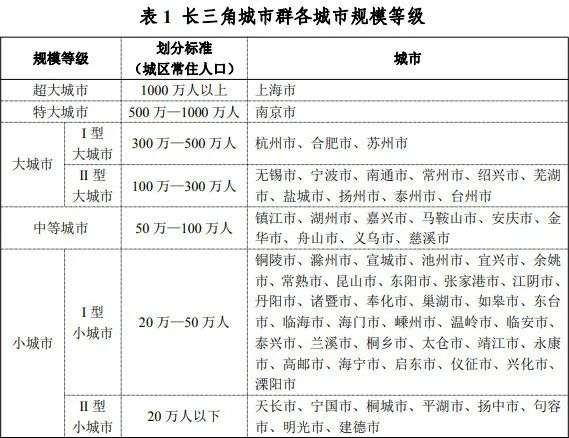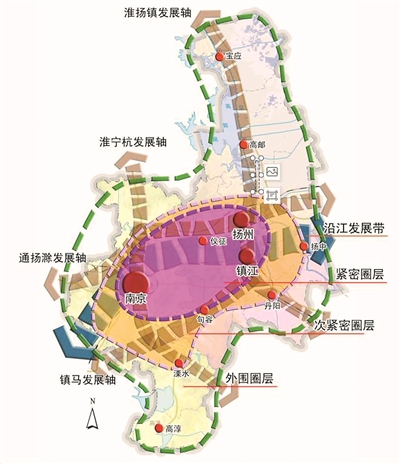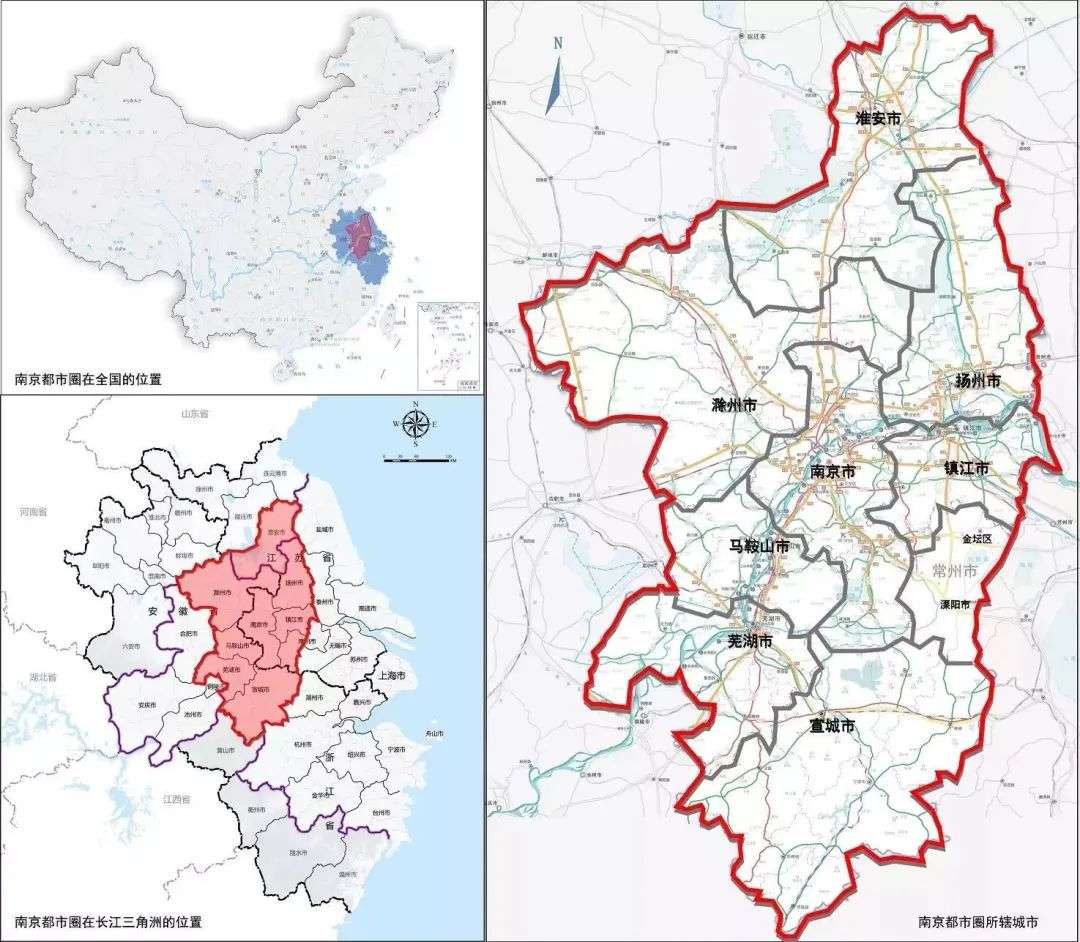Name the “First Circle” of the Yangtze River Delta?
Editor’s note: This article is from the micro-channel public number “Urban Evolution” (ID: urban_evolution) , Author: Cheng Xiaoling .
On July 4, six party and government leaders in the three cities of Ningzhen Yang gathered in Nanjing and signed five agreements covering areas such as the Grand Innovation Corridor, Rail Transit Construction, Yangtze River Protection, and Big Data Universal.
This is considered by the local media as “the strongest breakthrough in the integration of the three places” since Ning Zhenyang proposed the concept of integrated development.
As one of the earliest areas in the country to explore coordinated development, Ning Zhenyang has been integrated for 18 years and was once considered to be the region with the best basic conditions in the Yangtze River Delta except the Shanghai metropolitan area.
In the “Yangtze River Delta Urban Group Development Plan” issued by the National Development and Reform Commission and the Ministry of Housing and Urban-Rural Development, the Nanjing metropolitan area with Ning Zhenyang as the core layer is the “first circle” in the “one core, five circles and four belts”, Nanjing It is also the only megacity in the Yangtze River Delta urban agglomeration.
Photo source: “Development Plan of the Yangtze River Delta City Group”
However, as the center of gravity of the development of the Yangtze River Delta has moved significantly eastward in recent years, the “latecomers” Hefei metropolitan area and Hangzhou metropolitan area have risen rapidly.
Ning Zhenyang’s integration is obviously no longer “just to talk”.
Legging behind crisis
Yangzhou is located in the northeast of Nanjing, Zhenjiang is located in the east of Nanjing, and Yangzhou is across the river from Zhenjiang. Nanjing, the provincial capital, has always lived next to the two cities, with frequent resource flows and unique conditions for urbanization.
Public information shows that this is the second time that the Ning Zhenyang Party and Government Joint Meeting was held. Last time, it will be traced back to November 2017. The “Ningzhenyang Integrated Working Mechanism” reviewed and approved at that time formally determined that the three cities should establish a normalized working mechanism. Among them, “Ning Zhenyang Party and Government Joint Conference” is the highest standard.
According to the “Yangzhou Daily” report, the original intention of the joint meeting was to accelerate the integration of Ningzhen Yang. In the eyes of many people, Ning Zhenyang’s integration started early, but he hurried to the late set.
Although Nanjing is firmly ranked C among the three cities, Yangzhou was the first to propose this concept. In 2002, Yangzhou first proposed the concept of “Ningzhen Yangtong Urbanization”. In 2006, “Building the Ningzhen Yang Economic Sector” as a provincial strategy was officially included in the report of the 11th Party Congress of Jiangsu Province.
Since then, “actively promote the construction of Nanjing Metropolitan Area and Ningzhen Yangtong Urbanization” and “Ningzhen Yangtong Urbanization” have appeared in various important documents in Jiangsu. However, it wasn’t until 2014 that the “Ningzhen Yangtong Urbanization Development Plan” was formally released, which clearly established a breakthrough in accelerating the docking of major infrastructure and key cross-border development areas to jointly build the Ningzhen Yang Metropolitan Area.
Overall spatial pattern of Ningzhen Yang Metropolitan Area Photo source: Xinhua Daily
At present, the “Ningzhen Yangtong Urbanization Development Plan” with a planning period of 2014-2020 is nearing completion, but the “transcripts” handed over by the three places are not dazzling.
For example, six years have passed since the beginning of the plan to propose “inter-city commute half an hour”. Today Ning Zhenyang is still working hard to form a half-hour “commuter circle” and “living circle”. The foundation for integrated development has not yet been laid. prison.
In addition, the construction of high-speed rail along the North River and Ningzhen Ningyang’s urbanized commuter rapid rail transit is lagging behind. The construction and operation of airports and ports in the three cities are still based on their independent development. Synergy, mutual competition in interests…
Compared with the “small target” set 6 years ago-by 2020, an international metropolitan area with a relatively strong vitality and competitiveness will be basically built. Today Ning Zhenyang clearly has a big gap.
From a national perspective, the development of urban groups is a general trend, and the urban pattern is facing a new round of reshuffle. Based on the Yangtze River Delta, Ning Zhenyang is at a disadvantage regardless of the degree of integration or the proportion of the province’s total economic output compared to Su Xichang and Hang Shaoyong.
Sketch of the Nanjing Metropolitan Area Photo source: Published by Nanjing
Therefore, how to strengthen cooperation and enhance the synergy of the three cities is particularly urgent.
There are targeted
Zhang Shourong, vice president of the Jiangsu Academy of Social Sciences, pointed out that the problems of the development of the metropolitan area are mainly reflected in four aspects –
Insufficient transportation connectivity, homogeneous industry competition, market segmentation, public services, and ecology are not complete.
This is particularly evident in the integration process of Ning Zhenyang.
They all say “synergistic development, transportation first”, but it wasn’t until 2016 that Yangzhou and Nanjing had motor train traffic, and so far there is no G-mark high-speed rail.
In terms of industry, as early as 2016, the Jiangsu Provincial Philosophy and Social Science Planning Office once wrote an article pointing out:
According to estimates, the similarity coefficient of the industrial structure of the three cities of Ningzhen and Yang exceeds 0.9, and the correlation with GDP is negative. The three cities not only have isomorphism in traditional pillar industries such as petrochemicals and equipment manufacturing, but also compete in emerging industries such as new materials and smart grids.
From this point of view, the results of the cooperation reached by the three cities can be said to be “targeted.”
Among the five major agreements signed by the three parties of Ningzhen Yang, there are two related to transportation interconnection-namely, the “Nanjing Jiangbei Area to Yizheng Rail Transit Research Cooperation Agreement” “Supplementary Agreement on Ningyang’s Inter-city Co-construction” is the scope of the joint construction of both sides of Ning Yang.
Public information shows that the Ningyang Intercity Rail Transit Project is the first cross-river intercity rail transit line in Jiangsu Province. After the project is completed, “it is expected to become the highest level of commuting mode between Nanjing and Yangzhou. The rail transit network is connected.” This will obviously greatly shorten the space-time distance between the two places.
The framework agreement for the G312 Industrial Innovation Corridor in Ningzhen was ranked first among all agreements.
Nanjing Municipal Party Committee Secretary Zhang Jinghua proposed at the joint meeting that the current promotion of Ning Zhenyang’s comprehensive speed-up and walking at the forefront should focus on doing “five major events”. One of the first things is to “use the G312 Innovation Corridor as a breakthrough, promote the optimal allocation of innovation resources through a market-oriented mechanism, and promote the integration and connection of Nanjing Xianlin University City, Kirin Science and Technology Park with Zhenjiang High-tech Zone and University City to create regional high quality The source of innovation for development.”
In recent years, due to geographical constraints and other spatial constraints, Nanjing’s advantages as a “top student” in science and education have not been fully utilized. Statistics show that the number of double first-class universities in Nanjing is second only to Beijing and Shanghai in the country, ranking third in the country, but the number of high-tech enterprises and other indicators are not as good as those in cities such as Wuhan and Chengdu.
In the view of Hong Yinxing, an economist and the former party committee secretary of Nanjing University, this kind of collaboration of science and technology corridor is more conducive to regional coordinated development than the development model around the central city of Siphon.
A total of 50 kilometers of innovative industrial corridors will be built by the two cities of Ningzhen, which will open up more space for the industrialization of scientific and technological achievements in the periphery of the Science and Technology Innovation Center, and thus to a certain extent, resolve Nanjing’s “technical, non-productive” awkward.
“Mountain Peak” uplift
“The higher the uplift of this’mountain peak’ in Nanjing will inevitably raise the surrounding’slope’.”
The words of Ma Minglong, Secretary of the Zhenjiang Municipal Committee, vividly illustrate the radiation effect of a core city on the surrounding areas.
Ning Zhenyang integrated, the provincial capital Nanjing is undoubtedly the lead “big brother”. However, all along, Nanjing’s “calling power” in the province has been criticized.
An earlier analysis pointed out that due to the similar industrial development level of the three cities in Ningzhen and Yang, the industrial connection is not frequent, but Nanjing has more cooperation with Chuzhou and Chaohu in Anhui. Although Yangzhou and Zhenjiang are closer to Nanjing, Su Xixi is obviously more attractive in terms of economic attractiveness.
In terms of overall strength, Nanjing, which ranks 11th in the country in terms of GDP in 2019, is not weak. However, from the perspective of first place, in 2019, among the 27 provincial capital cities in the country, Nanjing ranks second from the bottom, only higher than the capital of Shandong, Jinan, and is also referred to as the “small provincial capital”. Earlier, Nanjing was named by the Central Inspection Group as “the role of provincial capital cities is not enough.”
Image source: CCID Consulting
Zhang Jingxiang, a professor at the School of Architecture and Urban Planning of Nanjing University, analyzed that in the past 10 years, with the development of transportation networks and information economy, the area around Hangzhou Bay has been rapidly improved, and the west wing of the Yangtze River Delta centered on Nanjing is facing the challenge of marginalization; At the same time, the rapid rise of the Hefei metropolitan area has formed a huge suppression effect on Nanjing.
For this reason, in recent years, Jiangsu has repeatedly emphasized the promotion of the first place in the provincial capital. The Opinions on Supporting Nanjing to Accelerate the Improvement of Provincial Capital City Functions and Central City Priority Issued in 2019



